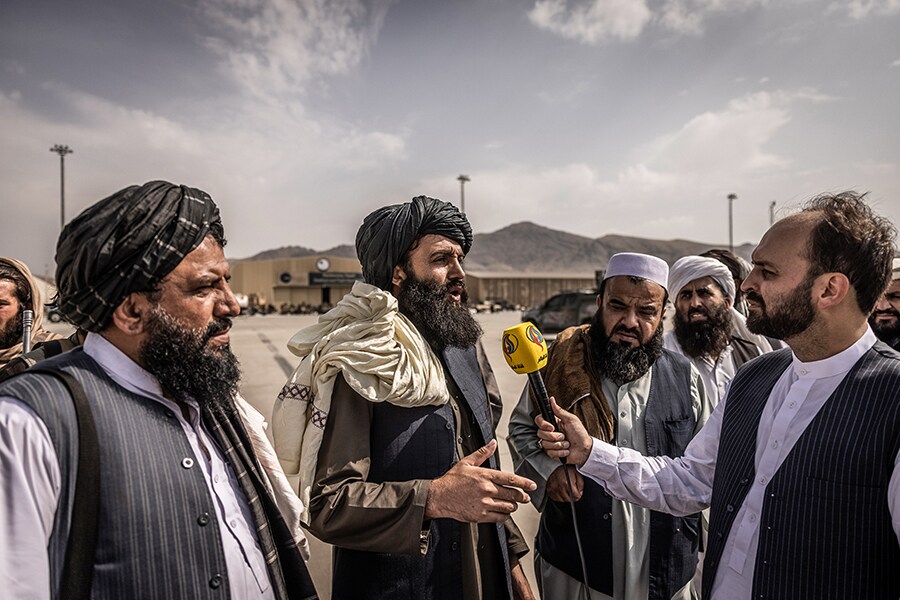
How will the Taliban govern? A history of rebel rule offers clues
A tightly bureaucratic authoritarianism, albeit sometimes allowing a degree of political opening and a a focus on controlling or coercing elements of society seen as tied to the old order, sometimes through staggering violence, are among the common traits
 A Taliban member speaks to a journalist at the airport in Kabul, Afghanistan, on Tuesday, Aug. 31, 2021. Insurgents who seize power tend to be authoritarian but pragmatic, desperate for legitimacy and ruthless toward classes they see as hostile.
A Taliban member speaks to a journalist at the airport in Kabul, Afghanistan, on Tuesday, Aug. 31, 2021. Insurgents who seize power tend to be authoritarian but pragmatic, desperate for legitimacy and ruthless toward classes they see as hostile.
Image: Jim Huylebroek/The New York Times
As Taliban commanders exchange their guns for the reins of power, some 38 million Afghans can do little but hold their breath and wait to see how their latest conquerors will rule.
That uncertainty, also palpable in foreign capitals from Washington to Beijing, is compounded by the deep contradiction between the group’s record of extremism and brutality during its prior reign, from 1996 to 2001, and its promises of moderation today.
History may offer a few clues. The Taliban are, depending on how one counts, something like the sixth or seventh rebel group to take over a country in the modern era. And while no two are exactly alike, certain patterns have emerged in how rebels rule.
Some learn to govern effectively, even to modernize, while others collapse in chaos or renewed war. Some grow crueler in power, lashing out at their subjects in fear and insecurity. Others moderate, though mostly in search of legitimacy and foreign aid.
But all seem to share a few traits:
©2019 New York Times News Service







